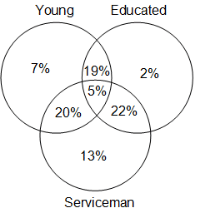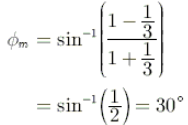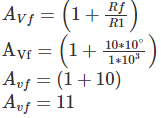GATE Mock Test Electronics Engineering (ECE) - 4 - Electronics and Communication Engineering (ECE) MCQ
30 Questions MCQ Test - GATE Mock Test Electronics Engineering (ECE) - 4
A 300-meter-long train passes a 450-meter-long platform in 5 sec. If a man is walking at a speed of 4 m/sec along the track and the train is 100 m away from him, how much time will it take to reach the man?
Directions: Select the most appropriate word/phrase among the choices to complete the sentence.
You can make your quixotic experiments with someone else, I do not wish to be your ________.
Which of the following word is opposite to the word “connivance”?
If prices reduce by 20% and sales increase by 15%, what is the net effect on gross receipts?
Direction: Each statement has a blank followed by four options. Select the most appropriate word for the blank.
Guru was always able to maintain a _______ face when he said something silly, and that contrast made everyone laugh.
In a town, 48% people are educated, 51% people are young and 60% are servicemen. 24% are educated and young, 25% are young and servicemen, 27% are educated and servicemen and 5% have all the qualities. If the total number of persons in this town is 300, what is the ratio of those who have exactly two characteristics and those who have only one characteristic?
In the following question, two/three statements are given followed by four conclusions. You have to consider the statements to be true even if they seem to be at variance from commonly known facts. You have to decide which of the given conclusions, if any, follow from the given statements.
Statements:
Some cats are owls.
Some owls are elephant.
Conclusion:
Some cats are elephant.
All owls are elephant.
Directions: Read the given context and answer the question that follows.
Most Reality TV shows centre on two common motivators: fame and money. The shows transform waitresses, hairdressers, investment bankers, counsellors and teachers, to name a few, from obscure figures to household names. A lucky few successfully parlay their fifteen minutes of fame into celebrity. The luckiest stars of Reality TV also reap huge financial rewards for acts, including eating large insects, marrying someone they barely know, and revealing their innermost thoughts to millions of people.
Which of the following options best supports the above paragraph?
The sum of five consecutive integer is a and the sum of next five consecutive integer is b. Then, (b-a)/100 is equal to
Directions: Insert the missing number.



f(x) = x, g(x) = 1/x ; by using Cauchy mean value theorem mean value for the function in [a,b] will be
The electric field of a uniform plane electromagnetic wave is:
![]()
The polarization of the wave is
If A2 - A + I = 0, then the inverse of A is
In the design of a single mode step index optical fibre close to upper cut-off, the single-mode operation is not preserved if
The value of the integral ![]() is equal to
is equal to
For each of the positive edge-triggered J-K flip flop used in the following figure, the propagation delay is ΔT
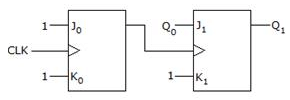

Which of the following waveforms correctly represents the output at Q1?
Let Gcc(s) be a PD controller. If f(t) = sin 2t, the amplitude of the frequency component of y(t) due to f(t) is
In an ideal silicon junction diode:
τn0 = τp0 = 10−7 sec
Dn = 25cm2/sec
Dp = 10cm2/sec
Then the ratia of Nd/N2 so that 80% of current in depletion region is carried by electrons is
Consider a compensator defined as ![]()
Then, the maximum phase shift of the compensator is ____.
In the given circuit, the values of V1 and V2 respectively are
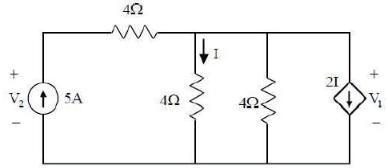
A communication channel with AWGN operating at a signal to noise ratio of SNR >> 1 and bandwidth B has capacity C1. If the SNR is doubled keeping it constant, then the resulting capacity C2 is given by
A filter has filter response given by h(t) = (sin(0.25πt))/πt. An input signal x(t) is applied at the input. Determine which of the signal component would be visible at the output.
x(t) = cos(0.125πt) – 2sin(0.125πt) + 0.125sin(0.5πt)
cos(0.125πt)
sin(0.125πt)
sin(0.5πt)
The photo resist that is insoluble initially and becomes soluble after exposure to UV light is called
Refer the following figure to find the value of gain of the feedback circuit (feedback factor) and closed loop voltage gain respectively if R1=1kΩ and Rf = 10kΩ.
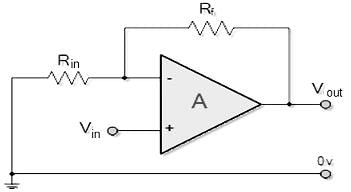
Choose the correct match for input resistance of various amplifier configurations shown below.

A sailor goes 12 km downstream in 48 minutes and returns in 1 hour 20 minutes. The speed of the sailor in still water is:
A proportional plus derivative controller
- Has high sensitivity.
- Increases the stability of the system.
- Improves the steady-state accuracy.
Which of the above statements are correct?
A rectangular pulse of duration T is applied to a matched filter, output obtained out of this system would be most likely
If C is any closed path and U is a scalar function, then the value of contour integral ∮c(∇U).dl is (Answer up to the nearest integer)



